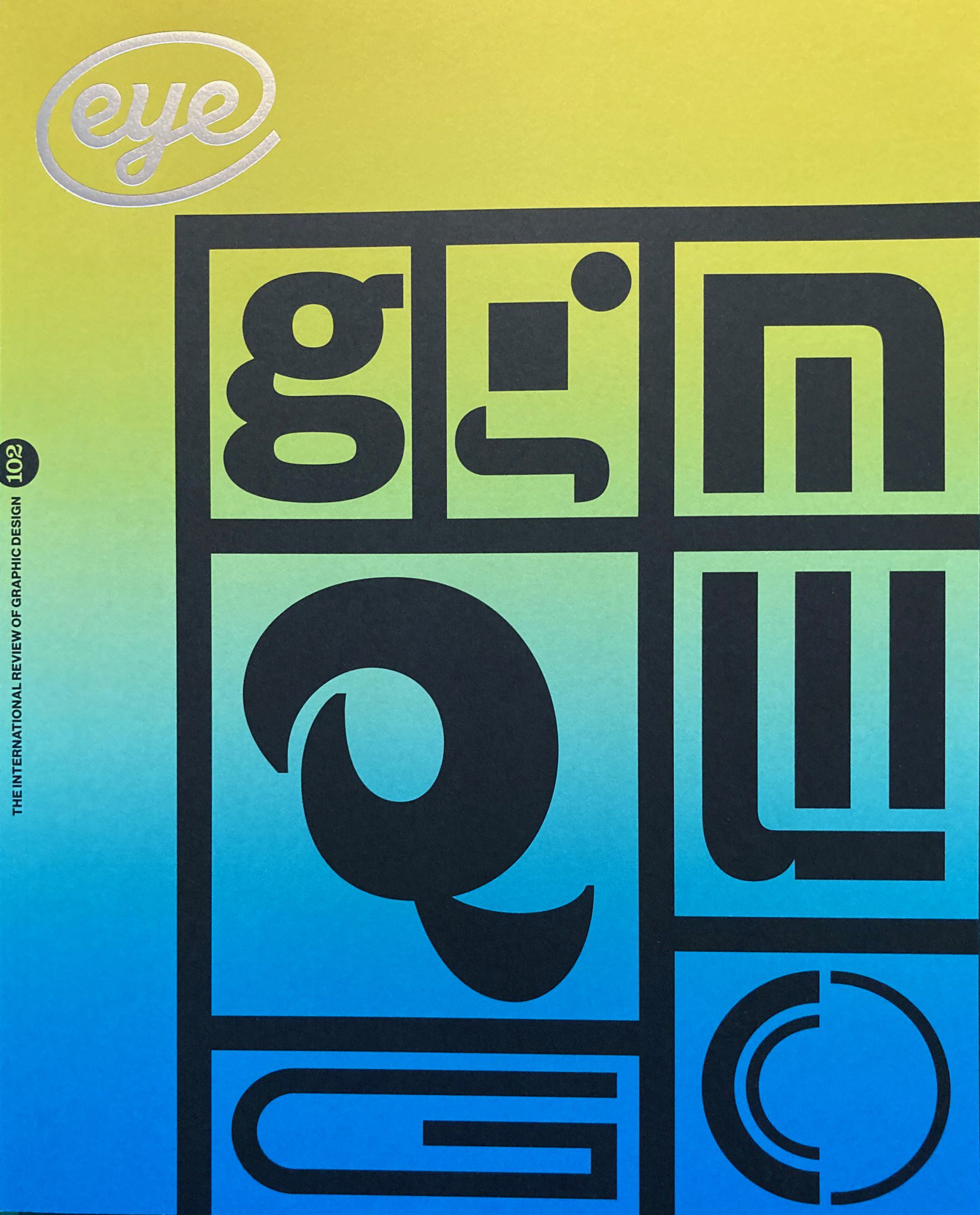Autumn 2021
The name’s Caroff. Joe Caroff
Thilo von Debschitz profiles a man who designed some of the best known movie identities of the past six decades.
In 1962, Joe Caroff came up with with the idea of turning the number ‘7’ of ‘007’ into a gun for the first James Bond film Dr. No. Almost six decades and 25 Bond films later, Caroff’s logo is still hard at work.
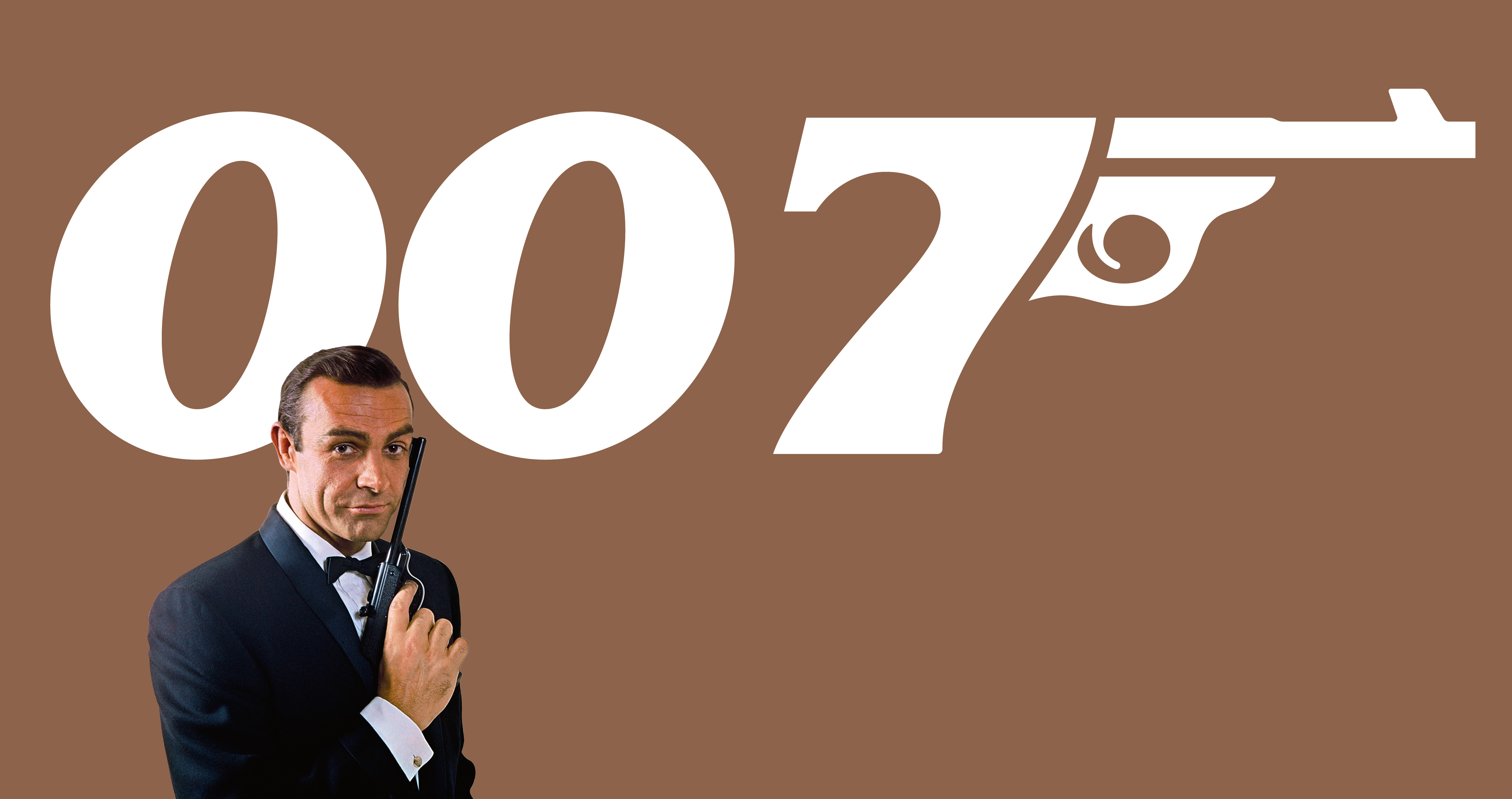
The 007 logo for the James Bond films is just as familiar to us as the poster for West Side Story, yet hardly anyone knows Joe Caroff, the creator of both these resonant images. With a career spanning generations, Caroff has created graphic design of iconic value that is especially memorable for its typographic ingenuity. In his youth, Caroff, who celebrated his hundredth birthday on 18 August 2021, worked as the right-hand man for the world-famous poster designer Jean Carlu – literally, because the Frenchman had lost his right arm as a young man due to an accident. ‘At Carlu there were no set times. Sometimes he asked me to come at eight in the morning, sometimes not before ten in the evening. I was able to take part in large design projects and learn a lot of different techniques from him that were very useful in my later professional life,’ Caroff recalls. For example, Charles T. Coiner, art director at the agency N. W. Ayer & Son and creative advisor to the US government, commissioned Jean Carlu to create the famous 1942 propaganda poster ‘America’s Answer! Production’. Caroff was allowed to assist on this particular project.
Caroff’s movie poster for West Side Story from 1961, often wrongly attributed to Saul Bass, who designed the animated opening sequence of the film.
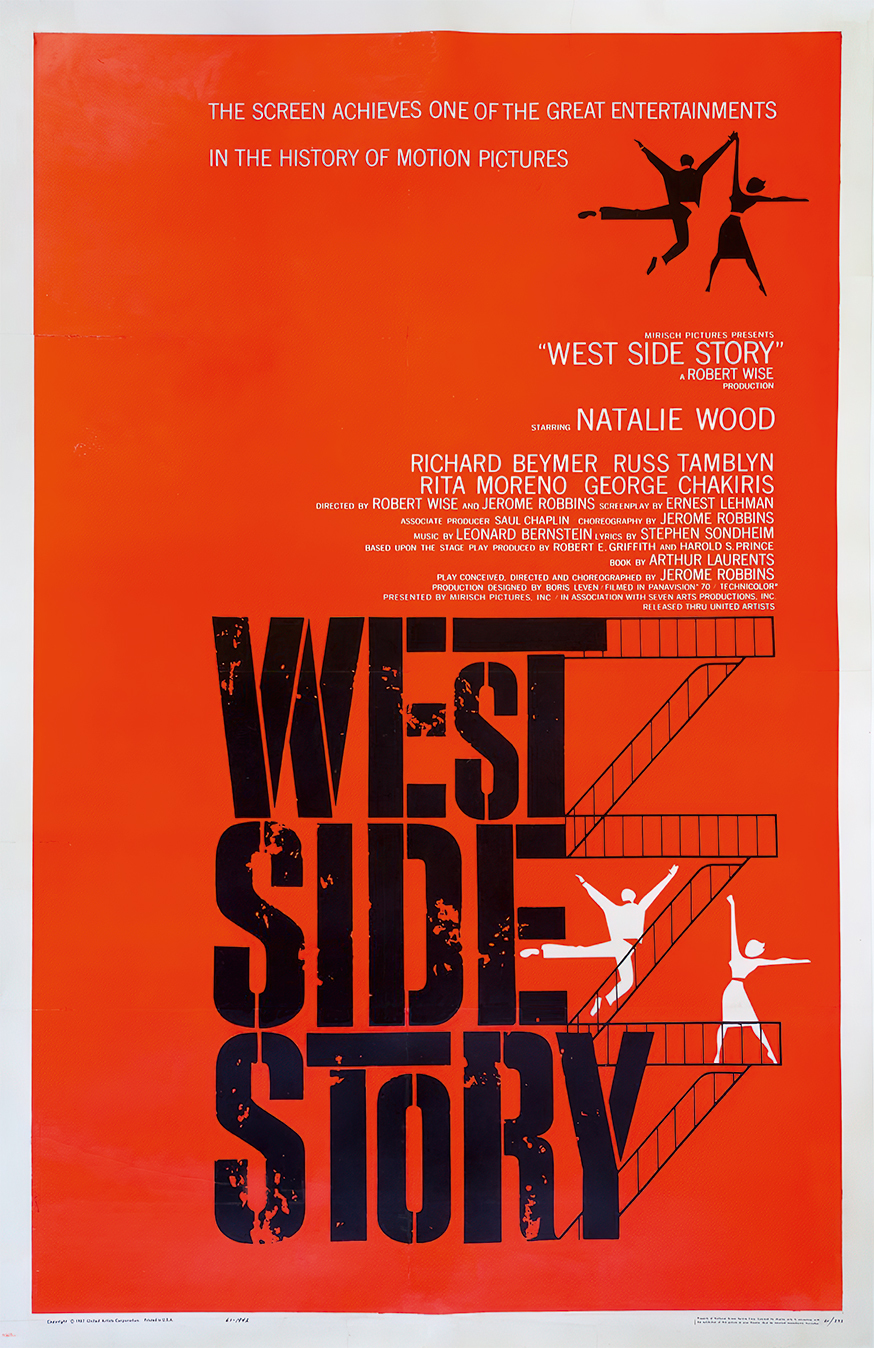
Nine months after completing his studies at the Pratt Institute and five days after marrying his girlfriend, Phyllis, in May 1943, Caroff was drafted into the US Army. He was stationed in the UK at RAF Molesworth where he ran art courses, designed propaganda leaflets and painted pin-up girls on bombers. After the war he was transferred to North Africa where he helped repatriate US troops.
Caroff was honourably discharged and went home, where he worked as a packaging designer at Alan Berni & Associates. Soon afterwards, he set up his own business designing book covers with his wife Phyllis working as his sales representative. Many different publishers had their titles developed by Caroff: on average he provided the final artwork for one book cover per day. One such job was for Norman Mailer’s debut novel The Naked and the Dead (1948), a career boost for Caroff at the age of 27.
An even bigger hit was his 1961 movie poster for West Side Story. (This is often mistakenly attributed to Saul Bass, who designed the very different graffiti-laden title sequence for the film.) The following year, the company making the first James Bond film Dr. No commissioned Caroff to design a logo for letterheads. The flat fee was $300. Nearly 60 years and 25 Bond films later, Caroff’s ingenious ‘007’ logo, based on a Walther PPK gun, is still in use.
In 1965, after eighteen years as a lone warrior, Caroff founded his own agency, Joe Caroff Associates, Inc. Assignments followed for logos, print media, packaging and for countless film campaigns. Sometimes his team of nine was working on ten film projects at a time. There was a flat rate of $5000 for the drafts and the same amount for the finished artwork. Well known projects from this time include Caroff’s 1972 posters for Cabaret and Last Tango in Paris and A Bridge Too Far (1977).
Poster for the movie Cabaret, 1972. Asked recently about the design, Caroff said: ‘I wanted the poster to look very theatrical, with the name ‘Cabaret’ as big as possible. In the horizontal position the letters appeared too small for me. So I thought: what the hell, let’s arrange it vertical to make it really big and put Liza on top!’
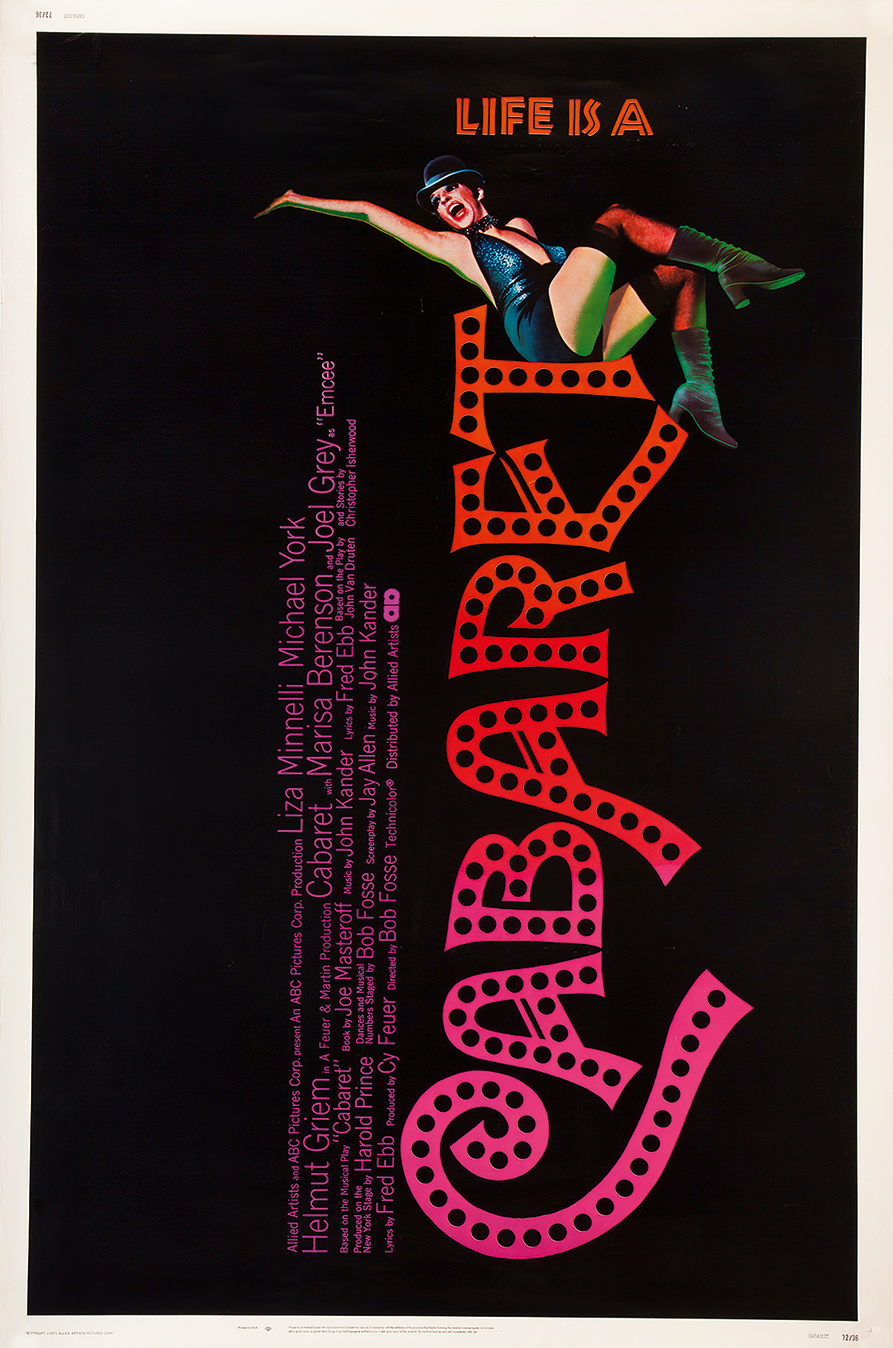
Caroff’s sensual, hand-drawn italic lettering for Last Tango spawned many imitations and variations, including Colin Brignall’s highly popular typeface Tango for Letraset. In 1986 Caroff closed the agency and, together with Lon Kirschner, set up Kirschner Caroff. He finally retired at the age of 85.
Caroff always saw himself as a service provider and did not sign most of his works, so this may explain why he has remained largely unknown in the design world. He has not kept a single design – not a single poster – from his long career in his New York apartment.
For Caroff it is all in the past. ‘Time is a constant motion,’ he says. He devotes himself to looking after Phyllis. He did not leave his home for more than a year during the Covid-19 pandemic. To celebrate 100 years on the planet, he had decided to go out and buy himself a watch. Then, as a 100th birthday surprise, Barbara Broccoli’s production company EON presented him with a watch, engraved ‘007’. Take note: the name’s Caroff. Joe Caroff.
Joe Caroff in his New York apartment, with a Goodkin art projector in view. Photo: Simone Bloch.
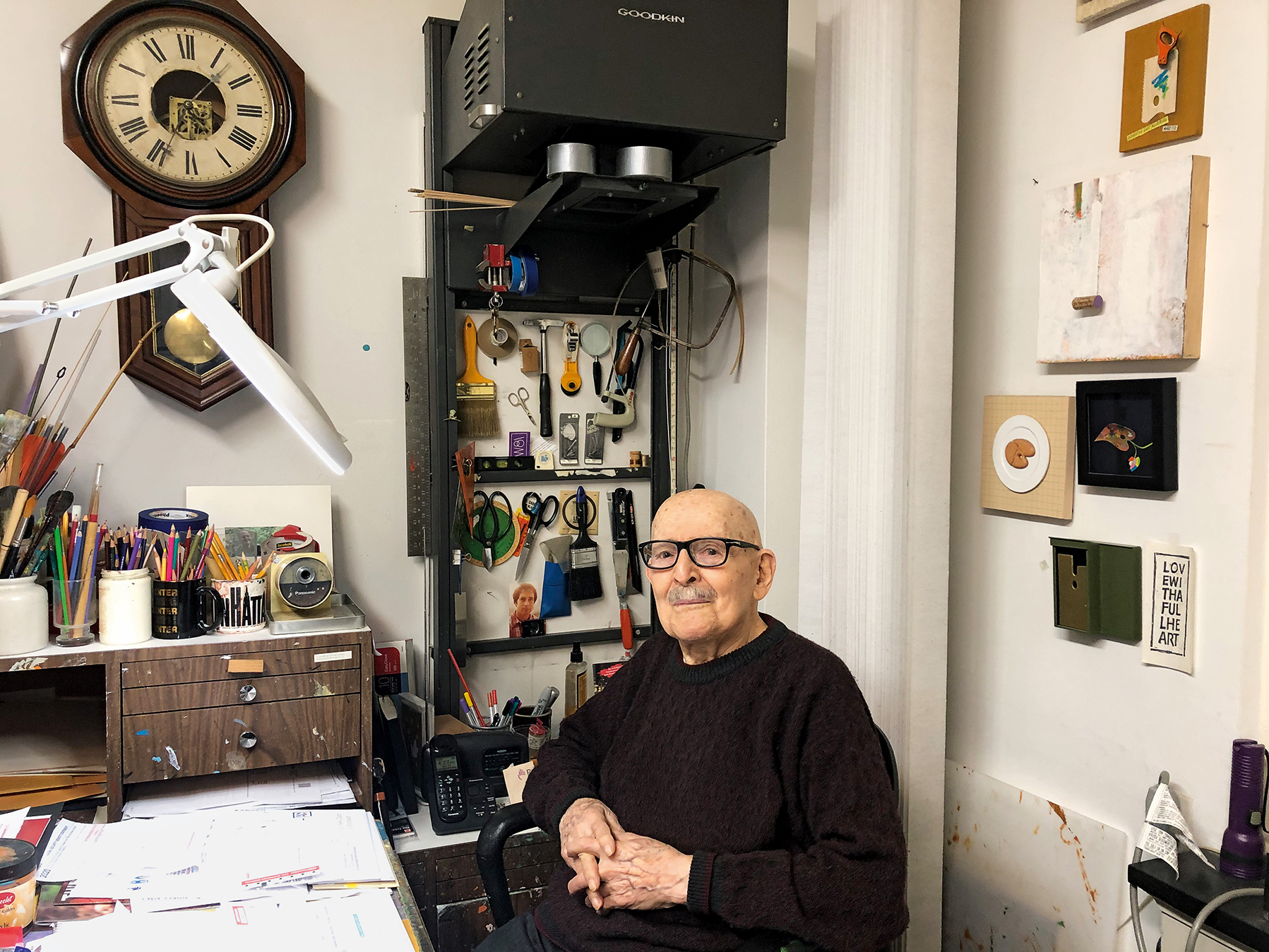
Thilo von Debschitz, graphic designer and author, Wiesbaden, Germany
First published in Eye no. 102 vol. 26, 2021
Eye is the world’s most beautiful and collectable graphic design journal, published for professional designers, students and anyone interested in critical, informed writing about graphic design and visual culture. It is available from all good design bookshops and online at the Eye shop, where you can buy subscriptions and single issues.

